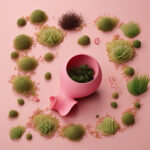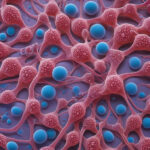Norway Trees Sprout Gold: Bacteria Turns Soil Metal into Nanoparticles
A surprising study has shown that Christmas or spruce trees hide gold inside their needles. Researchers in Norway have discovered that the humble trees’ roots interact with fungi and bacteria in the soil, leading to the formation of gold nanoparticles within the tree’s tissues. This remarkable phenomenon sheds light on nature’s incredible ability to transform elements in unexpected ways.
The study, conducted by a team of scientists from the University of Bergen, found that certain bacteria play a crucial role in the process of converting gold from the soil into nanoparticles that accumulate in the trees. This discovery challenges traditional notions of where valuable minerals can be found and highlights the intricate relationships between plants, microorganisms, and soil composition.
One of the key bacteria identified in this process is Cupriavidus metallidurans, known for its unique ability to withstand high levels of toxicity. By absorbing gold from the soil and processing it into nanoparticles, these bacteria essentially turn the trees into “gold farms,” albeit on a microscopic scale. This groundbreaking research not only expands our understanding of biogeochemical processes but also raises the possibility of sustainable methods for mineral extraction in the future.
The implications of this study go beyond the realm of environmental science and could have significant economic ramifications. If researchers can harness the power of these bacteria to extract gold from trees on a larger scale, it could revolutionize the mining industry and reduce the environmental impact of traditional mining practices. Furthermore, it opens up new possibilities for bio-based technologies that leverage natural processes to recover precious metals.
In addition to gold, the study also found traces of other metals such as copper and zinc in the trees’ needles, further highlighting the complexity of interactions between plants and their environment. This natural phenomenon serves as a reminder of the hidden treasures that lie beneath the surface of the Earth and the intricate web of life that sustains our planet.
As we continue to explore the potential of biotechnology and biomimicry, the discovery of gold-sprouting trees in Norway offers a glimpse into the remarkable capabilities of nature. By studying and understanding these processes, we can unlock new opportunities for sustainable resource management and environmental stewardship. Who would have thought that a simple Christmas tree could hold such a valuable secret within its branches?
In conclusion, the revelation that Norway trees can sprout gold thanks to bacteria transforming soil metal into nanoparticles showcases the extraordinary synergy between living organisms and their environment. This symbiotic relationship not only enriches our understanding of the natural world but also sparks innovation in fields ranging from mining to biotechnology. Nature continues to surprise and inspire us, offering endless possibilities for discovery and growth.
Norway, Trees, Gold, Bacteria, Nanoparticles











